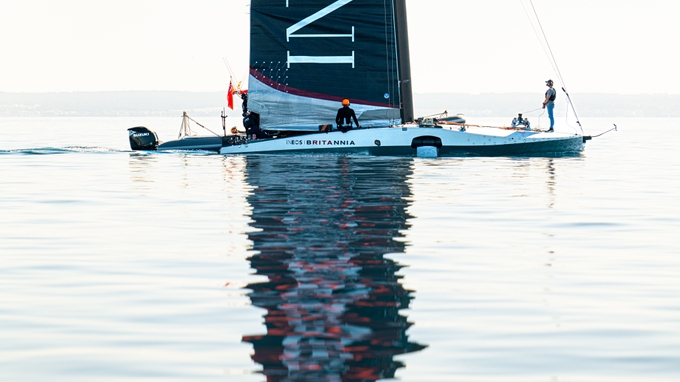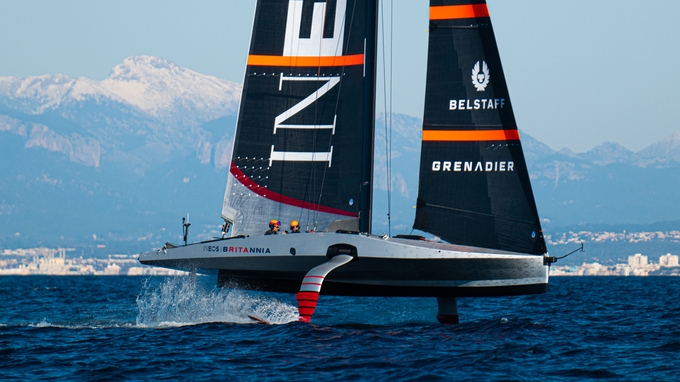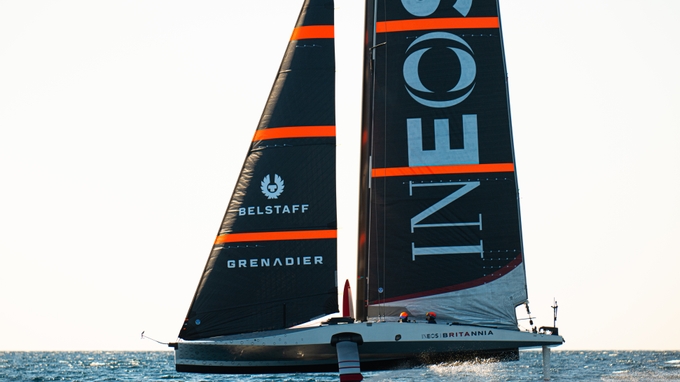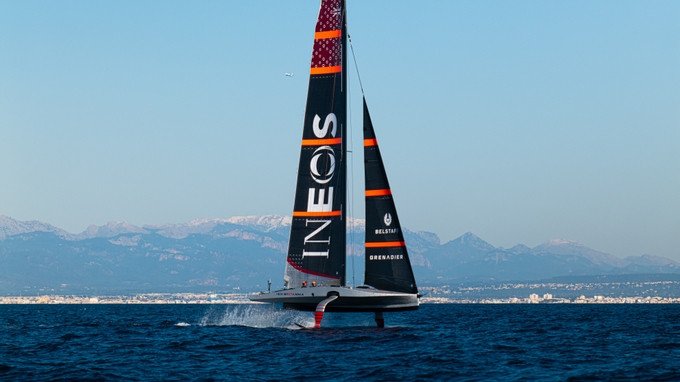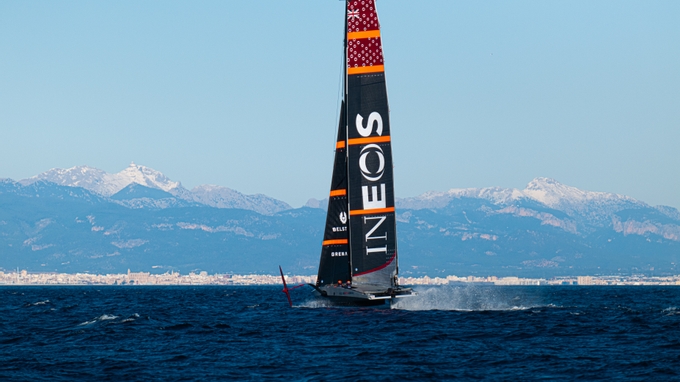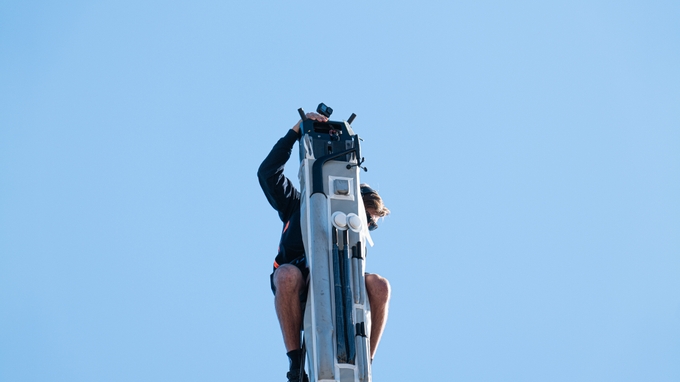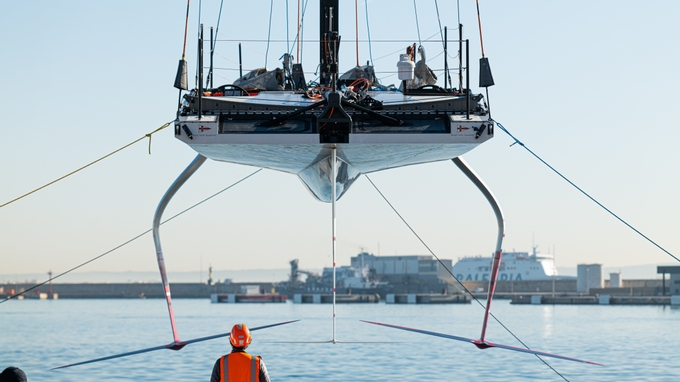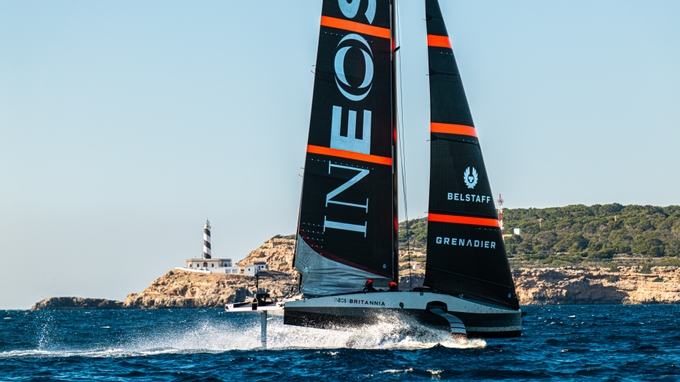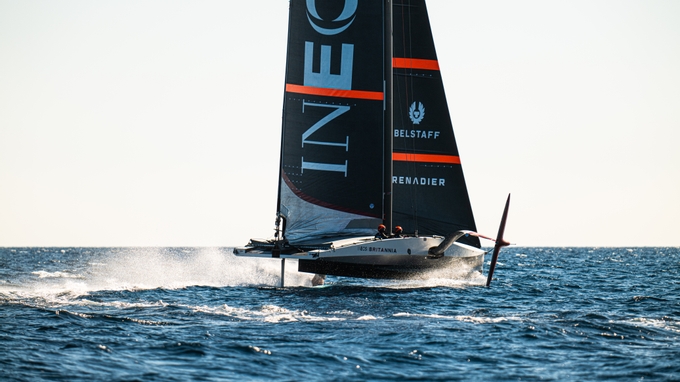SMILES FOR MILES
The INEOS Britannia battle-wagon rolled on again with another outstanding performance from the sailing test team who barely put a foot wrong all day on the water, churning out the data collection miles and then showing us some balletic turn-ups at pace, blistering gybes with very interesting and powerful low exit flight, and some whipsaw fast foil-to-foil tacks.
Ben Cornish, something of an unheralded secret-weapon in the INEOS Britannia armoury, returned to testing duties on the wheel opposite Giles Scott with Leigh McMillan and Luke Parkinson taking the lion’s share of the pod duties. Bleddyn Mon, the vital tech-link between the sailors and the analysts, swapped in for Parkinson late in the afternoon and the team just didn’t miss a beat. Multiple flight modes were in full test and on display. Sheeting was co-ordinated and positive. And the day was a fabulous mix of getting what was required done early and then letting the sailors sail. Jeff Causey summed it up rather accurately afterwards when he said wryly: “There's technical priorities and there’s their sailing priorities so the day is always a balance of trying to arm wrestle between the two.”
On the basis of today, the recon unit probably called the result as a score-draw between the two competing priorities but for sure, the shore team and Mission Control back in Brackley, Northamptonshire, home of Mercedes Applied Science, will be more than happy with what they’re seeing and getting from these Palma winter sessions.
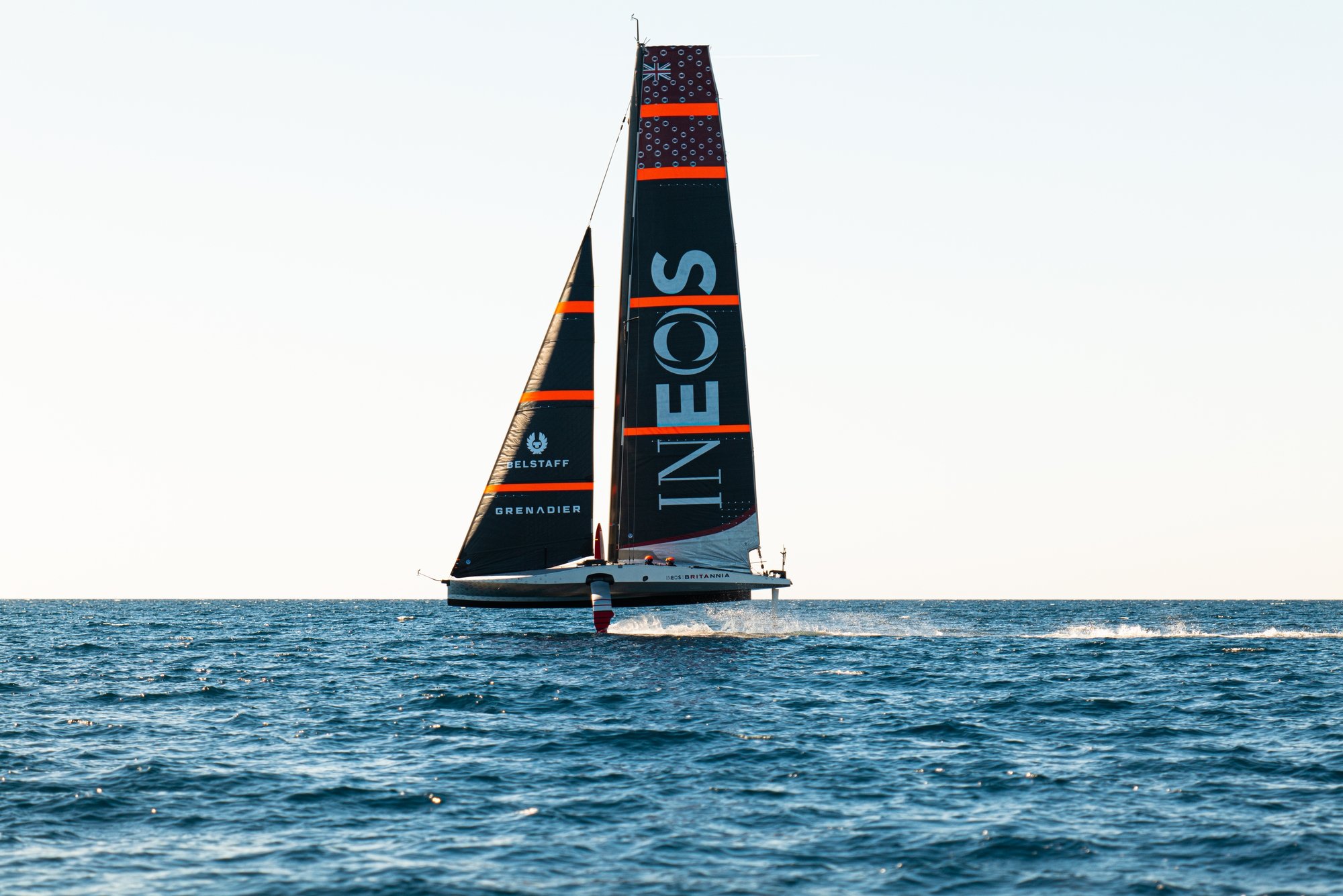
But probably the stand-out contributor to the success of the day was the meteorological team who called the breeze in the Bay to nigh on perfection. And it was a tricky pattern to call as two conflicting patterns – onshore and offshore – fought for dominance. The ‘Silver Bulle’t played in one in the early afternoon and then towed to the other for the sunset session, staying in such perfect breeze that they never changed up a jib. Genius from the Met Team at INEOS Britannia – beers may need to be bought.
Asked how the shore team are bearing up under the pressure of expectation from this no-stone-unturned, highly technical campaign, Jeff Causey was quick to praise all the team saying: “It feels like it's getting momentum which is good, especially as we start to put longer days on the water and that starts to feel easier as the length of the day is really dictated by the amount of daylight we have, and that's a good place to be in especially for the shore team and what really highlights the level that they are operating at is with the reliability of the boat so I think that keeps the morale up when the boat works and isn't breaking down.”
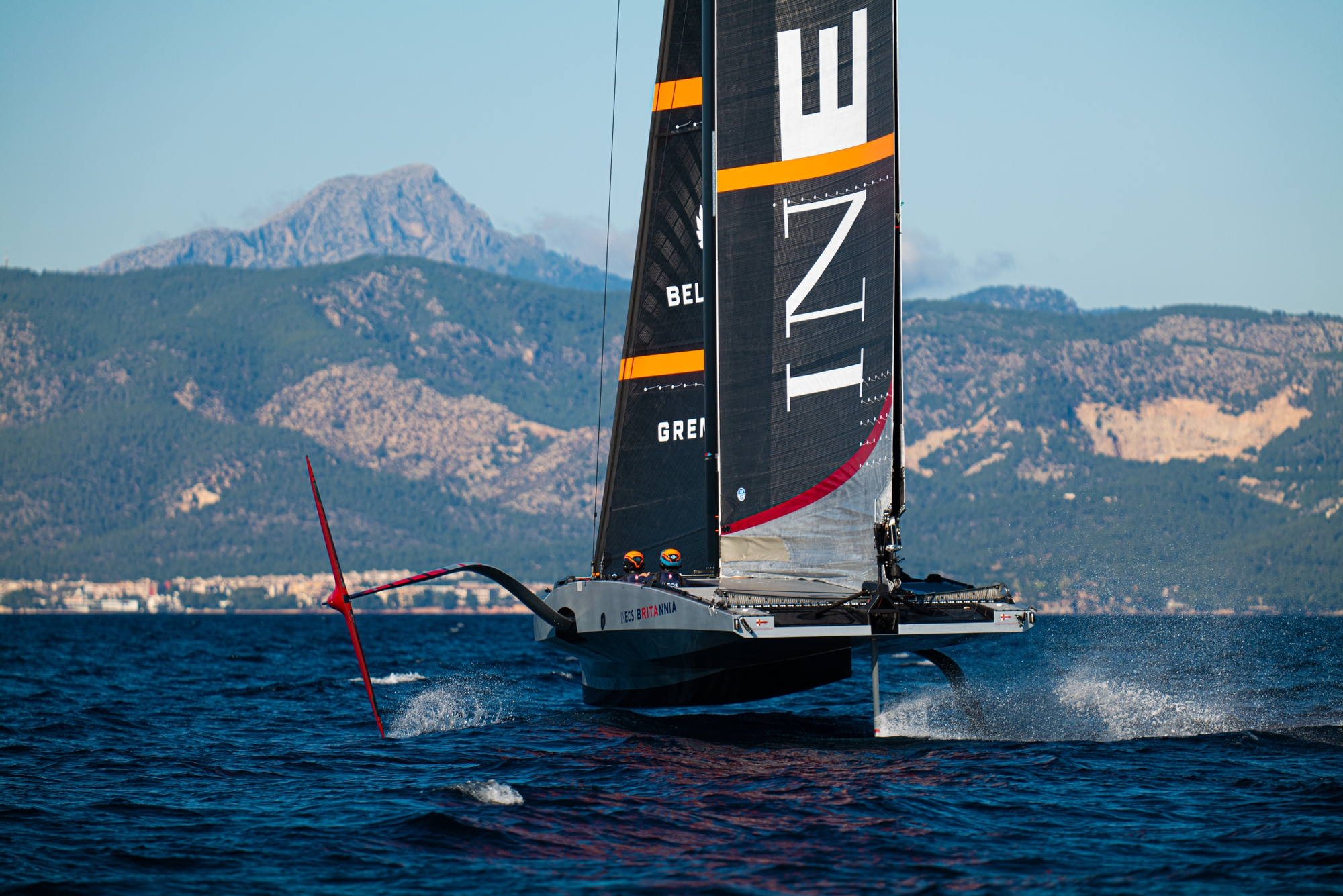
The reliability of INEOS Britannia’s T6 has been a feature, as have all the LEQ12s in this cycle, with only minor halyard lock issues and a few sessions cut short to preserve the asset after a splashdown or issue. Today was another long one with dock-out just after midday and an early evening tow back at just past 5pm local time. On a day where it was clearly one for longer test runs to extract the foil data and load pressures, the sailors still had a near 100% record of foil-to-foil or touch & go manoeuvres which shows the building confidence all around both on the water and shoreside.
Good things are happening in Palma. INEOS Britannia has belief, experience and technology – and that’s a mighty combination in the America’s Cup. Read the history.
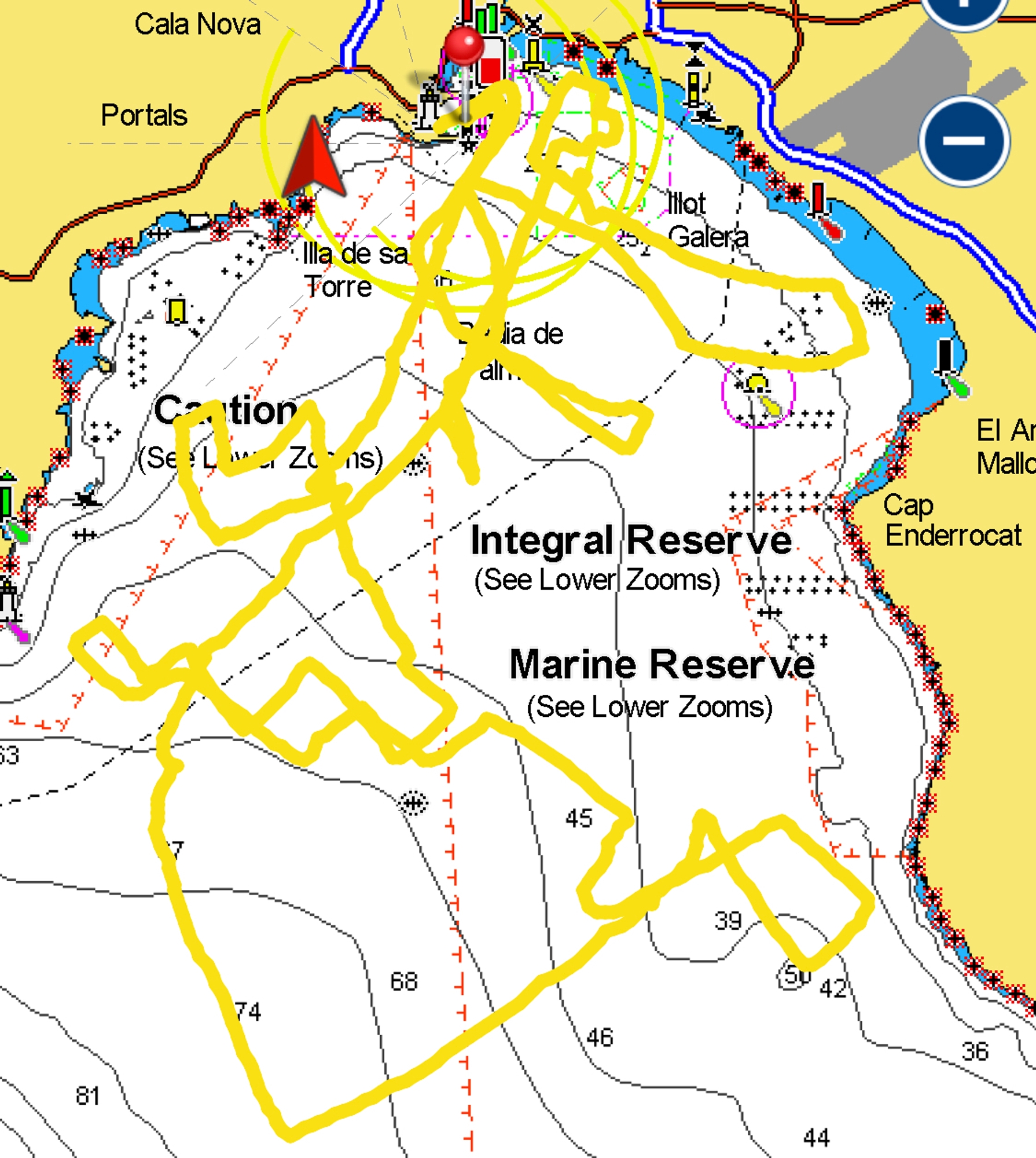
On Water Recon Notes: INEOS Britannia’s 20th sailing day proved to be another valuable one for the British syndicate. This was due in no insignificant way to the skills of their meteorology team, who judged the battle between the offshore and onshore wind bands to perfection over the day. This enabled the crew of the British T6 LEQ12 – helmsmen Giles Scott and Ben Cornish, trimmers/flight controllers Leigh McMillan and Luke Parkinson (swapped out in the afternoon for Bleddyn Mon – to enjoy a two hour fast and furious opening session in a westerly 14 knot wind with a choppy sea state offshore, before towing back into the Bay to take advantage of a solid 10 knots from 330. So confident were the team of the wind forecast that the J3 headsail was hoisted first thing and stayed up all day.
As usual, on the crew’s agenda was a mixture of straight-line data gathering runs at various wind angles and flight heights, as well as plenty of foiling tacks and gybes, turn-ups, and bear ways – including one particular turn down that saw the chase boats powering along at over 40 knots as they tried to keep up. A suspected technical glitch very late in the day saw sails come down shortly after 1630. This may perhaps have been an hour earlier than planned, but there’s no doubt the British squad will be all smiles after another successful day on the water.
Dock out: 1202 Dock-in: 1715
Conditions: 1300 6 knots from 240 (offshore), 1400 13-14 knots from 280, 1530 9 knots from 330 (inshore)
Onboard Today
Helms: Giles Scott / Ben Cornish
Crew: Leigh McMillan / Luke Parkinson with Bleddyn Mon swapped in
Sails Used:
Mainsail (MN1-1P): 4 hours 30 minutes
J3 (J3-1): 4 hours 20 minutes
Total Tacks: 7 – 4 foil-to foil, 2 touch & go, 1 touchdown
Total Gybes: 7 – 4 foil-to-foil, 3 touch & go
Recon Notes: Multiple self-take-offs with 2 tow ups.
Take-off speed: 10-22 knots (estimated) self at 50-70 degrees TWA (True Wind Angle)
